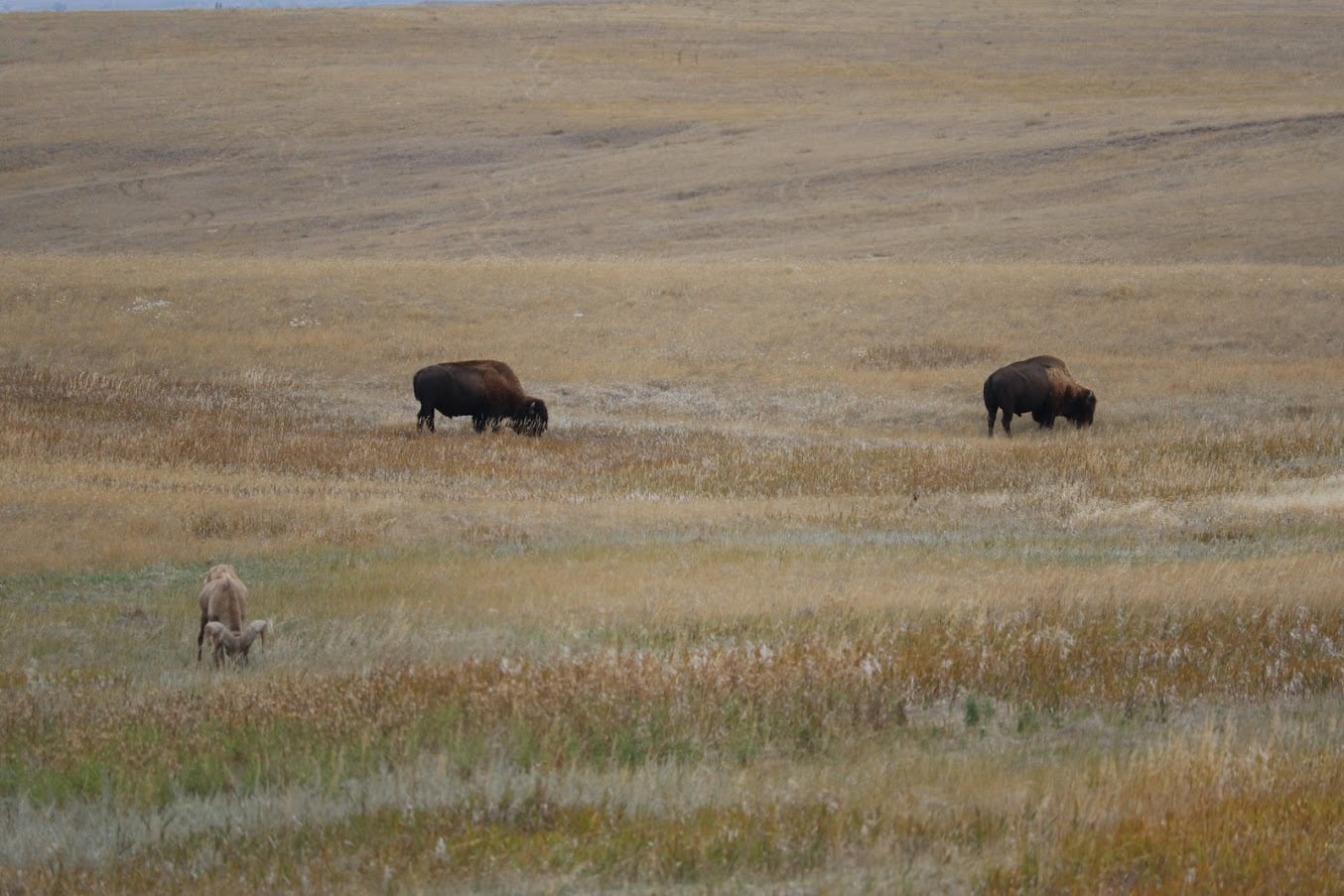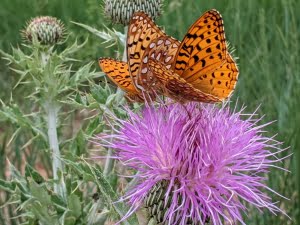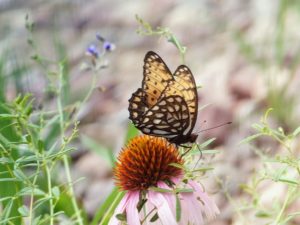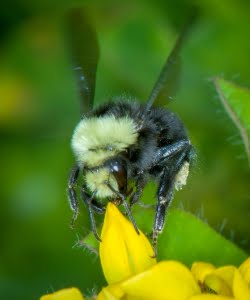
Protecting Prairie Pollinators: Study recommends insect conservation in the Great Plains
“Few grassland managers consider native pollinators in their practices,” says Tom Kaye of the Institute for Applied Ecology. “This review consolidates the information conservationists need to reverse pollinator losses by providing better food and shelter for key insects.” The review also seeks to spur new research on high priority conservation issues such as causes of pollinator losses. “Before we can even tackle basic questions about declines, we need to better understand what pollinator communities are out there,” says Mary Rowland with the Pacific Northwest Research Station of the Forest Service. “Many taxa are not yet even described, but new techniques such as DNA meta-barcoding will help fill in the blanks about these communities and the flowers they rely on in the Great Plains and elsewhere.”
The research team, made up of conservation practitioners and researchers from the U.S. Forest Service, Oregon State University, South Dakota Department of Natural Resources, and the Institute for Applied Ecology published the review to put up-to-date information and tools into the hands of land managers. They provide an overview of the most important pollinator groups in shortgrass, tallgrass, and mixed prairies of the Great Plains. The team calls out the limited knowledge and research on common management activities and stressors on pollinators, including mowing, pesticide application, grazing, drought and prescribed fires. “Our review provides a wide range of information about pollinators, their basic needs, and general concerns to consider for management,” says Brice Hanberry, lead author on the article. “If we wait for more detailed scientific information to manage for pollinators, we may have fewer pollinators to manage.” Bees, butterflies and wasps can potentially benefit from some of these tools if they are applied with their requirements for food, shelter, and reproduction in mind.
Grazing ungulates have always shaped prairie ecosystems, and can be used to benefit pollinators when they are considered in management plans. The regal fritillary, for example, needs purple coneflower nectar during June and July, when cattle also consume this iconic prairie flower. Moderate grazing by livestock can curtail tree and shrub encroachment and benefit forb-loving butterfly populations, while too much grazing can reduce or eliminate the plants they need.
Plant, insect, and wildlife species in the Great Plains have evolved with fire as a driving force, keeping trees and shrubs from encroaching and reducing grass thatch to favor flowering plants. Whether insects can flee or fall prey to fire depends on many factors, such as where they are in their life cycle and the intensity and patchiness of the burn. Although fire can directly harm some pollinator populations in the short term, many bees that nest underground can survive fire, and prescribed burning can be a tool to favor nectar plants and provide long-term improvements to pollinator food resources.
Climate change has already brought drought and flash floods, warming temperatures, and shifting precipitation seasonality to the Great Plains grasslands. Farmers can reduce the effects of climate change on pollinators by planting flowering strips along the edges of cultivated fields that provide pollen and nectar throughout the growing season.
Groves of trees and shrubs along the banks of rivers provide a cool shady respite for bumble bees and give shelter to mason bees while they find mates and reproduce. Fencing out grazers and actively restoring these riparian zones is key to the health of pollinators as well as wildlife.
Prairie restoration provides hope for improving conditions for pollinators in the future. The authors of this review encourage land managers and conservationists to draw up pollinator management plans as they already do for fish and wildlife. They advocate for planting with pollinator-friendly seed mixes, restoring high quality habitat, monitoring management outcomes for at-risk pollinators, and use of adaptive management to respond to pollinator needs. Arming grassland managers and conservationists with the information they need to prioritize pollinator health and improve habitat can reverse the declines of these essential insect pollinators.
The proof of this paper is in press as of October 30, 2020 in Rangeland Ecology & Management.
Expert Contacts:
Brice Hanberry, U.S. Forest Service, [email protected]
Sandra DeBano, Dept. of Fisheries and Wildlife, [email protected]
Tom Kaye, Institute for Applied Ecology, [email protected]
For general media inquiries, please contact:
Michel Wiman, Institute for Applied Ecology, [email protected], (541) 753-3099 x 701
Restoration
Research
Education
Get Involved
Contact
Main Office:
4950 SW Hout Street
Corvallis, OR 97333-9598
541-753-3099
[email protected]
Southwest Office:
1202 Parkway Dr. Suite B
Santa Fe, NM 87507
(505) 490-4910
[email protected]
© 2024 Institute for Applied Ecology | Privacy Policy




